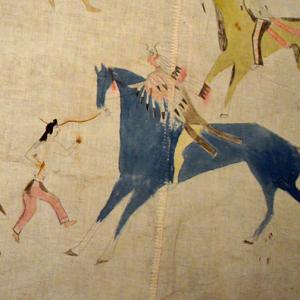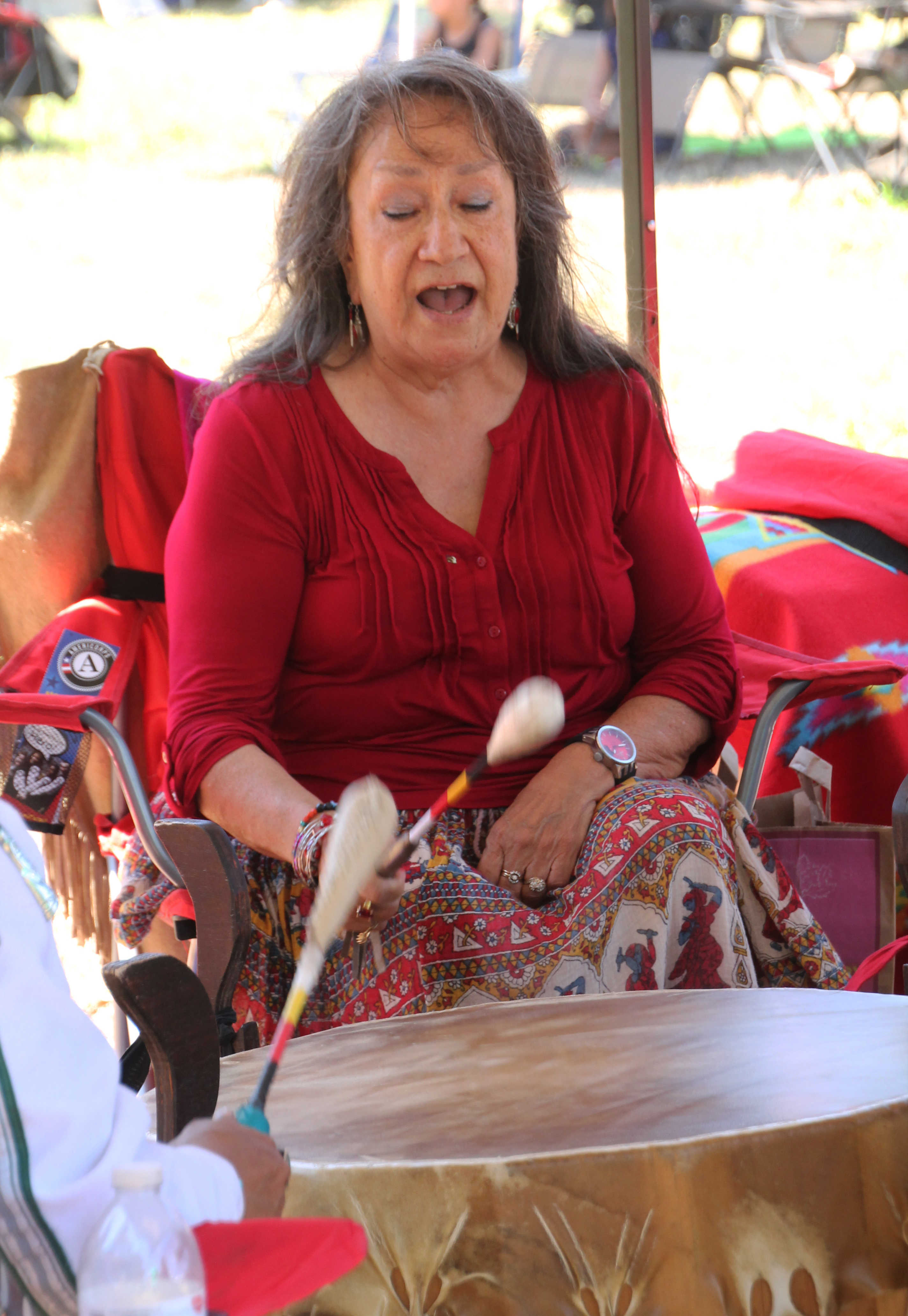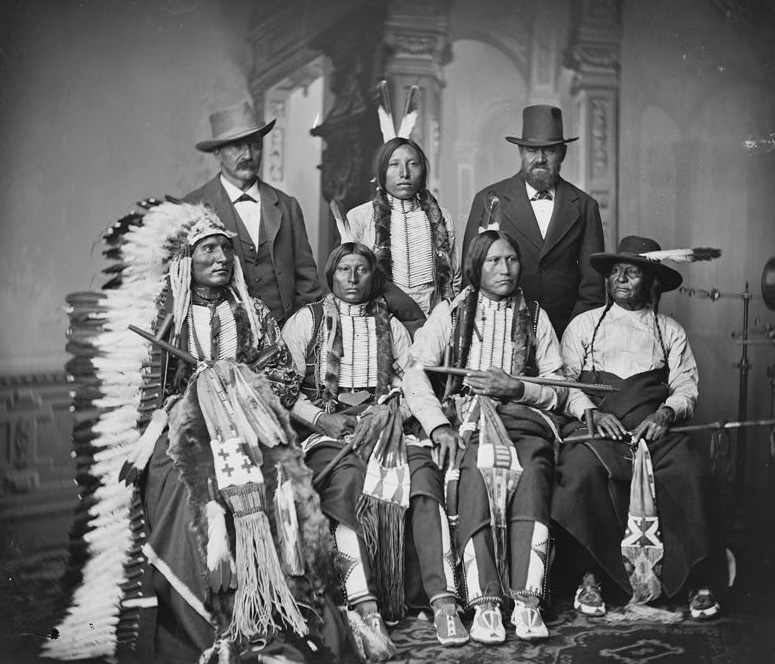|
Lakota People
The Lakota (; or ) are a Native Americans in the United States, Native American people. Also known as the Teton Sioux (from ), they are one of the three prominent subcultures of the Sioux people, with the Eastern Dakota (Santee) and Western Dakota (). Their current lands are in North Dakota, North and South Dakota. They speak — the Lakota language, the westernmost of three closely related languages that belong to the Siouan languages, Siouan language family. The seven bands or "sub-tribes" of the Lakota are: * (, Burned Thighs) * ("They Scatter Their Own") * (, Without Bows) * (Hunkpapa, "End Village", Camps at the End of the Camp Circle) * (Miniconjou, "Plant Near Water", Planters by the Water) * ("Blackfeet" or "Blackfoot") * (Two Kettles) Notable Lakota persons include (Sitting Bull) from the , (Touch the Clouds) from the Miniconjou; (Black Elk), (Red Cloud), and (Billy Mills), all ; (Crazy Horse) from the and Miniconjou, and (Spotted Tail) from the ... [...More Info...] [...Related Items...] OR: [Wikipedia] [Google] [Baidu] |
Sitting Bull
Sitting Bull ( ; December 15, 1890) was a Hunkpapa Lakota people, Lakota leader who led his people during years of resistance against Federal government of the United States, United States government policies. Sitting Bull was killed by Indian agency police accompanied by U.S. officers and supported by U.S. troops on the Standing Rock Indian Reservation during an attempt to arrest him at a time when authorities feared that he would join the Ghost Dance movement. Before the Battle of the Little Bighorn, Sitting Bull had a vision in which he saw many soldiers, "as thick as grasshoppers", falling upside down into the Lakota camp, which his people took as a foreshadowing of a major victory in which many soldiers would be killed. About three weeks later, the confederated Lakota tribes with the Northern Cheyenne defeated the 7th Cavalry Regiment, 7th Cavalry under Lt. Col. George Armstrong Custer on June 25, 1876, annihilating Custer's battalion and seeming to fulfill Sitting Bull's ... [...More Info...] [...Related Items...] OR: [Wikipedia] [Google] [Baidu] |
Lakota People
The Lakota (; or ) are a Native Americans in the United States, Native American people. Also known as the Teton Sioux (from ), they are one of the three prominent subcultures of the Sioux people, with the Eastern Dakota (Santee) and Western Dakota (). Their current lands are in North Dakota, North and South Dakota. They speak — the Lakota language, the westernmost of three closely related languages that belong to the Siouan languages, Siouan language family. The seven bands or "sub-tribes" of the Lakota are: * (, Burned Thighs) * ("They Scatter Their Own") * (, Without Bows) * (Hunkpapa, "End Village", Camps at the End of the Camp Circle) * (Miniconjou, "Plant Near Water", Planters by the Water) * ("Blackfeet" or "Blackfoot") * (Two Kettles) Notable Lakota persons include (Sitting Bull) from the , (Touch the Clouds) from the Miniconjou; (Black Elk), (Red Cloud), and (Billy Mills), all ; (Crazy Horse) from the and Miniconjou, and (Spotted Tail) from the ... [...More Info...] [...Related Items...] OR: [Wikipedia] [Google] [Baidu] |
Red Cloud
Red Cloud (; – December 10, 1909) was a leader of the Oglala Lakota from 1865 to 1909. He was one of the most capable Native American opponents whom the United States Army faced in the western territories. He led the Lakota to victory over the United States during Red Cloud's War, establishing the Lakota as the only nation to defeat the United States on American soil. The largest action of the war was the 1866 Fetterman Fight, with 81 US soldiers killed; it was the worst military defeat suffered by the US Army on the Great Plains until the Battle of the Little Bighorn 10 years later. After signing the Treaty of Fort Laramie (1868), Red Cloud led his people in the transition to reservation life. Some of his opponents mistakenly thought of him as the overall leader of the Sioux groups (Dakota, Lakota, and Nakota), but the large tribe had several major divisions and was highly decentralized. Bands among the Oglala and other divisions operated independently, though some indivi ... [...More Info...] [...Related Items...] OR: [Wikipedia] [Google] [Baidu] |
Black Elk
Heȟáka Sápa, commonly known as Black Elk (baptized Nicholas; December 1, 1863 – August 19, 1950), was a ''wičháša wakȟáŋ'' (" medicine man, holy man") and '' heyoka'' of the Oglala Lakota people. He was a second cousin of the war leader Crazy Horse and fought with him in the Battle of Little Bighorn. He survived the Wounded Knee Massacre in 1890. He toured and performed in Europe as part of '' Buffalo Bill's Wild West''. Black Elk is best known for his interviews with poet John Neihardt, where he discussed his religious views, visions, and events from his life. Neihardt published these in his book ''Black Elk Speaks'' in 1932. This book has since been published in numerous editions, most recently in 2008. Near the end of his life, he also spoke to American ethnologist Joseph Epes Brown for his 1947 book ''The Sacred Pipe''. There has been great interest in these works among diverse people interested in Native American religions, notably those in the pan-Indian mo ... [...More Info...] [...Related Items...] OR: [Wikipedia] [Google] [Baidu] |
Touch The Clouds
Touch the Clouds (Lakota: Maȟpíya Ičáȟtagya or Maȟpíya Íyapat'o) (c. 1838 – September 5, 1905) was a chief of the '' Minneconjou'' Teton Lakota (also known as Sioux) known for his bravery and skill in battle, physical strength and diplomacy in counsel. The youngest son of Lone Horn, he was brother to Spotted Elk, Frog, and Roman Nose. There is evidence suggesting that he was a cousin to Crazy Horse. When Touch the Clouds's ''Wakpokinyan'' band split in the mid-1870s, the band traveled to the Cheyenne River Agency. He assumed the leadership of the band in 1875 after the death of his father and retained leadership during the initial period of the Great Sioux War of 1876-77. After the Battle of the Little Bighorn, he took the band north, eventually surrendering at the Spotted Tail Agency, where he enlisted in the Indian Scouts. However, not long after being present at the death of Crazy Horse, Touch the Clouds transferred with his band back to the Cheyenne River ... [...More Info...] [...Related Items...] OR: [Wikipedia] [Google] [Baidu] |
Two Kettles
The Two Kettles or Two Boilings are one of the seven subtribes of the Lakota people who, along with the Dakota, make up the Očhéthi Šakówiŋ (Seven Council Fires). They reside on the Cheyenne River Indian Reservation. Together with the Itazipcho (''Itázipčho'' - 'Without Bows') and Miniconjou (''Mnikȟáŋwožu'' or ''Hoȟwožu'' - 'Plants by the Water') they are referred to as ''Central Lakota'' and divided into several ''bands'' or ''tiyošpaye''. Historic Oóhenuŋpa thiyóšpaye or bands * Wanúŋwaktenula (''Wah-nee-wack-ata-o-ne-lar'', aka ''Waniwacteonila'' - 'Killed Accidentally') * Šúŋka Yúte šni ('Eat No Dogs') * Mnišála ('Red Water', a splinter group from the Itázipčho tiyošpaye, also called Mnišála- 'Red Water') * Oíglapta ('Take All That Is Left') The ''Oóhenuŋpa'' or ''Two Kettles'' were first part of the Mnikȟáŋwožu thiyóšpaye called ''Wáŋ Nawéǧa'' ('Arrow broken with the feet'), split off about 1840 and became a separate ''oyát ... [...More Info...] [...Related Items...] OR: [Wikipedia] [Google] [Baidu] |
Sihasapa
The Sihásapa or Blackfoot Sioux are a division of the Lakota people, Titonwan, or Teton. ''Sihásapa'' is the Lakota word for "Blackfoot", whereas '' Siksiká'' has the same meaning in the Nitsitapi language, and, together with the '' Kainah'' and the '' Piikani'' forms the ''Nitsitapi Confederacy''. As a result, the Sihásapa have the same English name as the Blackfoot Confederacy (correctly: Nitsitapi Confederacy), and the nations are sometimes confused with one another. The Sihásapa lived in the western Dakotas on the Great Plains, and consequently are among the Plains Indians. Their official residence today is the Standing Rock Reservation in North and South Dakota and the Cheyenne River Reservation in South Dakota, home also to the Itazipco (No Bows), the Minneconjou (People Who Live Near Water) and Oohenumpa (Two Kettle), all bands of the Lakota. Historic Sihásapa thiyóšpaye or Bands In 1880, John Grass provided a list of the bands (tiyóšpaye) of the Si ... [...More Info...] [...Related Items...] OR: [Wikipedia] [Google] [Baidu] |
Miniconjou
The Miniconjou (Lakota: Mnikowoju, Hokwoju – ‘Plants by the Water’) are a Native American people constituting a subdivision of the Lakota people The Lakota (; or ) are a Native Americans in the United States, Native American people. Also known as the Teton Sioux (from ), they are one of the three prominent subcultures of the Sioux people, with the Eastern Dakota (Santee) and Western D ..., who formerly inhabited an area in western present-day South Dakota from the Black Hills in to the Platte River. The contemporary population lives mostly in west-central South Dakota. Perhaps the most famous Miniconjou chief was Touch the Clouds. Historic Miniconjou thiyóšpaye or bands Together with the Sans Arc (''Itázipčho'', ''Itazipcola'', ''Hazipco'' – ‘Those who hunt without bows’) and Two Kettles (''Oóhe Núŋpa'', ''Oóhenuŋpa'', ''Oohenonpa'' – ‘Two Boiling’ or ‘Two Kettles’) they were often referred to as ''Central Lakota'' and divided into sev ... [...More Info...] [...Related Items...] OR: [Wikipedia] [Google] [Baidu] |
Sans Arc
The Sans Arc or Itázipčho are one of the seven subdivision of the Lakota people. They primarily live in the Cheyenne River Indian Reservation in South Dakota. Name ''Itázipčho'' is also written ''Itazipcola'' or ''Hazipco'' and is a Lakota term translating as "those who hunt without bows." ''Sans Arc'' is the French translation, meaning "without bows". The translator of '' Wooden Leg: A Warrior Who Fought Custer'' renders the name as Arrows all Gone. One of the many etymologies of the Lakota name tells the following story: The true meaning of ''Itazipacola'' is "no markings". This referred to the fact that the ''Itazipco'' were so generous they did not mark their arrows (they were usually marked so that braves could claim the bison they killed, etc.), that way everyone could share the meat of the hunt. This is why when the Creator wanted to give the pipe to the ''Lakota'', the White Buffalo Woman ''Wopi'' brought it to the ''Itazipco'', because they would always be willing ... [...More Info...] [...Related Items...] OR: [Wikipedia] [Google] [Baidu] |
Oglala Lakota
The Oglala (pronounced , meaning 'to scatter one's own' in Lakota language, Lakota) are one of the seven subtribes of the Lakota people who, along with the Dakota people, Dakota, make up the Sioux, Očhéthi Šakówiŋ (Seven Council Fires). A majority of the Oglala live on the Pine Ridge Indian Reservation in South Dakota, the eighth-largest Indian reservation, Native American reservation in the United States. The Oglala are a List of federally recognized tribes, federally recognized tribe whose official title is the called the Oglala Sioux Tribe of the Pine Ridge Reservation, South Dakota. History Oglala elders relate stories about the origin of the name "Oglala" and their emergence as a distinct group, probably sometime in the 18th century. Conflict with the European settlers In the early 19th century, Europeans and American passed through Lakota territory in increasing numbers. They sought furs, especially beaver fur at first, and later bison fur. The fur trade changed th ... [...More Info...] [...Related Items...] OR: [Wikipedia] [Google] [Baidu] |
Brulé
The Sicangu are one of the seven ''oyates'', nations or council fires, of Lakota people, an Indigenous people of the Northern Plains. Today, many Sicangu people are enrolled citizens of the Rosebud Sioux Tribe of the Rosebud Indian Reservation and Lower Brule Sioux Tribe of the Lower Brule Reservation in South Dakota. Distribution Many Sičhą́ǧu people live on the Rosebud Indian Reservation in southwestern South Dakota and are enrolled in the federally recognized Rosebud Sioux Tribe, also known in Lakȟóta as the ''Sičhą́ǧu Oyáte.'' A smaller population lives on the Lower Brule Indian Reservation, on the west bank of the Missouri River in central South Dakota, and on the Pine Ridge Indian Reservation, also in South Dakota, directly west of the Rosebud Indian Reservation. The different federally recognized tribes are politically independent of each other. Name The Sicangu Lakota are known as Sičhą́ǧu Oyáte in Lakȟóta, which translates to "Burnt Thighs N ... [...More Info...] [...Related Items...] OR: [Wikipedia] [Google] [Baidu] |
Siouan Languages
Siouan ( ), also known as Siouan–Catawban ( ), is a language family of North America located primarily in the Great Plains, Ohio and Mississippi valleys and southeastern North America with a few other languages in the east. Name Authors who call the entire family ''Siouan'' distinguish the two branches as Western Siouan and Eastern Siouan or as "Siouan-proper" and "Catawban". Others restrict the name "Siouan" to the western branch and use the name ''Siouan–Catawban'' for the entire family. Generally, however, the name "Siouan" is used without distinction. Family division The Siouan family consists of some 20 languages and various dialects: * Siouan ** Western Siouan *** Mandan **** Nuptare **** Nuetare *** Missouri River Siouan (a.k.a. Crow–Hidatsa) **** Crow (a.k.a. Absaroka, Apsaroka, Apsaalooke, Upsaroka) – 3,500 speakers **** Hidatsa (a.k.a. Minitari, Minnetaree) – 200 speakers *** Mississippi Valley Siouan (a.k.a. Central Siouan) **** Mitchigamea? **** ... [...More Info...] [...Related Items...] OR: [Wikipedia] [Google] [Baidu] |






